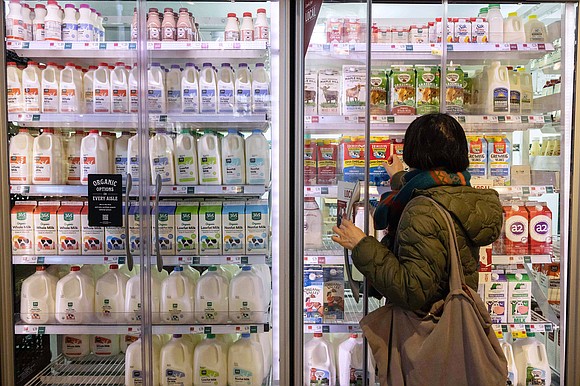Prices rose at a slower pace last month, the Fed's favored inflation gauge shows
CNN/Stylemagazine.com Newswire | 1/27/2023, 12:15 p.m.

Originally Published: 27 JAN 23 08:33 ET
Updated: 27 JAN 23 12:44 ET
By Alicia Wallace, CNN
(CNN) -- The Federal Reserve's preferred inflation gauge showed prices rose at a slower pace last month, indicating further progress in the central bank's battle with higher prices.
The Personal Consumption Expenditures price index, or PCE, rose by 5% in December, compared to a year earlier, the Commerce Department reported Friday.
In December alone, prices rose 0.1% from November.
On a month-to-month basis, prices for goods decreased 0.7% and prices for services increased 0.5%, according to the PCE price index for December. Within those categories, food prices increased 0.2% and energy prices decreased 5.1%.
Core PCE, which doesn't include the more volatile food and energy categories, increased by 4.4% annually, down from November's annual rate of 4.7%. On a monthly basis, it was up 0.3%.
Core PCE, which is now at its lowest level since October 2021, is the Fed's favored inflation gauge as it provides a more complete picture of consumer costs and spending.
"It's clear, continued progress on the inflation front — which is something we expected, but good to see," Joe Davis, Vanguard's global chief economist, told CNN. "I think you're seeing continued softening across the entire report."
The data showed that consumers pulled back in December, with spending falling by 0.2% from the month before. Personal income rose 0.2% last month, the smallest increase since April.
Through much of 2022, consumer spending remained robust in spite of high inflation, rising interest rates, and simmering recession fears. However, as the months dragged on, economic data suggested that consumers were running out of dry powder: Reliance on credit grew and delinquencies started to tick up, while savings levels declined.
Retail sales fell 1.1% in December, the Commerce Department reported earlier this month.
In Friday's report, the personal saving rate as a percentage of disposable income increased to 3.4% from 2.9% in November. The savings rate is now up 1 percentage point from its September low.
The increase is "a sign that consumers are growing cautious after rapidly drawing down their savings last year," Lydia Boussour, senior economist for EY Parthenon, said in a statement.
Separately on Friday, a closely watched measurement of consumer attitudes toward the economy showed increased confidence in January for the second consecutive month. The University of Michigan's consumer sentiment index landed at 64.9 for January, up nearly 9% from December.
Despite the uptick, the director of the school's Surveys of Consumers cautioned that there are "considerable downside risks" to sentiment and that two-thirds of consumers surveyed said they expect an economic downturn to occur in the next year.
Massud Ghaussy, senior analyst of Nasdaq IR Intelligence, said consumer sentiment hinges heavily on the labor market.
"The big question this year so far is, 'is the jobs market the next shoe to fall?'" he told CNN. "The economic picture is still quite murky, and the reason why we're seeing consumer confidence still relatively strong is because of a strong job market."
Friday's PCE report is the last key inflation data before the Federal Reserve meets next week for its first policymaking meeting of 2023.
Economists and investors are expecting the Fed to raise its benchmark rate by just quarter of a point, signaling another downshift following a spree of blockbuster rate hikes last year.
The Fed is not expected to pivot simply because inflation is cooling, Davis said, noting that PCE isn't yet at the Fed's 2% target.
The labor market, which has remained strong and tight despite inflation and interest rate hikes, remains a crucial area of focus in the Fed's inflation fight. The latest data on employment turnover as well as job growth will be released next week.
"The labor market is clearly Exhibit A in this debate between a soft landing or a mild recession," Davis said. "The bigger wild card is, do the modest layoffs that we're seeing in the technology sector in particular spread to other parts of the economy?"



